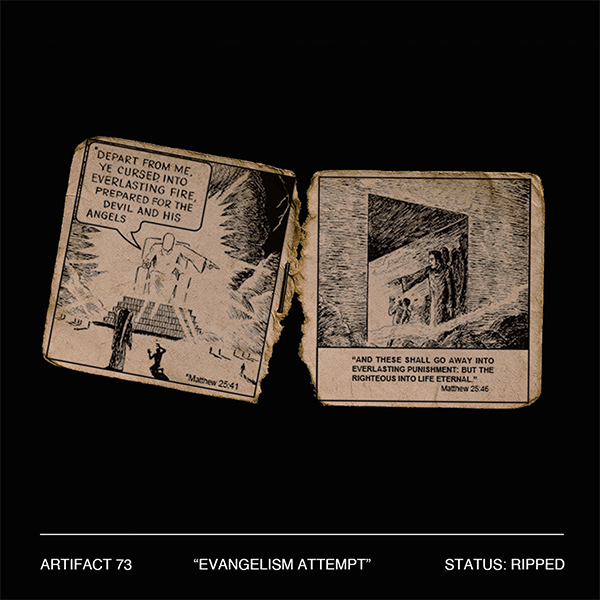The King Who Weeps
With two young children in my house, we go through band-aids quickly. On a daily basis, we have anywhere from 1 to 5 instances of someone getting a “boo-boo” and needing one of the trusty adhesive bandages.
Here’s the thing though: the band-aids often aren’t really doing anything. We just know they make our kids feel better. A bonk on the head occurs. Wailing ensues. And my husband and I know that if we put a band-aid on, it will make our crying child feel like something is being done. We do this, in part, because we truly want to comfort them in their distress, and it’s hard to know what else to do when the supposed “boo-boo” is invisible to us. We also do this because we know the crying will stop sooner if a band-aid arrives on scene.
A band-aid on a bonked forehead delivers the illusion of a quick fix.
A band-aid over a nasty paper cut keeps the injury out of sight and out of mind, and we can all return to whatever important thing we were doing before this interruption.
But here’s the thing, while band-aids might work some magic for us as parents, we all know the truth – they never actually heal anything.
Band-aids work some magic for us as parents, we all know they never heal anything. Share on XChrist the King Band-Aid
Back in December, the church calendar recently rolled around and began anew. The last Sunday of the church year ends with “Christ the King Sunday.” Together, we declare that Jesus is King. Images of golden thrones and shiny crowns come to mind as trumpets lead the procession. Then Christ the King Sunday fades, and the new church year begins. The golden hues of victory give way to the deep purples and longing of Advent. It seems difficult to reconcile these two things: Christ as victorious King and Christ as Immanuel – the One made flesh who came to dwell with us in our longing and in our pain.
But until we understand these things together, the good news that “Christ is King” will never be proclaimed in the fullness of its glorious goodness. Like the adhesive bandages I stick over my kids boo-boos, until we grasp the relationship between Jesus as Victor and Jesus as co-sufferer, “Christ is King” will remain a mere band-aid fix for the real pain of our world.
Here’s where I believe this comes powerfully home…
The King Who Weeps by Lazarus’ Tomb
When Mary reached the place where Jesus was and saw him, she fell at his feet and said, “Lord, if you had been here, my brother would not have died.” When Jesus saw her weeping, and the Jews who had come along with her also weeping, he was deeply moved in spirit and troubled. “Where have you laid him?” he asked. “Come and see, Lord,” they replied.
Jesus wept.
John 11:32-35
The sisters – Mary and Martha – send word to Jesus, “Master, the one you love so very much is sick.” When Jesus gets the message, he responds, “This sickness is not fatal. It will become an occasion to show God’s glory by glorifying God’s Son.”
This sickness will not end in death. The story begins with us, as readers, knowing that Jesus knows something the others do not.
He knows, days later when Martha comes out to greet him, that he is about to raise her brother to life. He knows when Mary runs and falls at his feet weeping that this story will not end in death.
Jesus knows that He is the Resurrection and the life, and that this truth is not just for the future, but for today. In other words, Jesus knows he is King!
One might expect Jesus, with this knowledge, to say something like:
Mary…God is in control.
Mary…these tears don’t make sense. Death is part of the old world that is passing away and I’m here to do something new. If your theology was right, you wouldn’t be crying.
Mary…what good are these tears? These tears are a waste of time when we could be doing something useful.
And yet, Jesus does not correct, analyze, or minimize.
Jesus weeps.
In his commentary on John, NT Wright says,
“Jesus bursting into tears is one of the most remarkable moments in this whole gospel story. There can be no doubt of its historical truth. Nobody in the early church, venerating Jesus and celebrating his own victory over death, would have invented such a thing.”
Jesus, knowing that he has the power to raise Lazarus from the dead, knowing that he fully intends to do so in just a short while – weeps with Mary.
Why would Jesus do this?
First, Jesus weeps because he is willing to enter into Mary’s pain. He is Immanuel – God with us. Jesus weeps to be with Mary in her grief.
But more than this:
Jesus weeps because as the King who is making all things right, he alone understands just how wrong things are.
The One who is seated on the throne, who out of his love for the world is making all things new, is precisely the one who is able to lead us in grief that things are not yet as they should be.
As King making all things right, Jesus alone understands just how wrong things are. Share on XA Band-aid for My Grief
In the wake of the election, there were no shortage of friends who, wanting to console me as a woman of color, offered “Christ is King” declarations.
Christ is King.
Jesus is Lord.
God is in control.
Amen, and amen, and amen! I affirm this good news wholeheartedly.
But can I be honest and share with you how hearing this “good news” has often felt to me as a woman of color who is mourning the brokenness I see all around me? Can we all be honest and confess that often that which really is good news is often proclaimed at a time or in a manner that subverts its goodness?
The truth that Christ is King is sometimes preached as a diversion and distraction from our tears. It is a band-aid gospel – a quick application to stop the tears. A hasty word to keep the pain and the injury out of sight.
Like my five-year-old son, I am in pain! I am hurt because this election has been another reminder that I am not welcomed or seen as a full human by many people in this nation. I am grieving over what feels like the space of many miles between members of Christ’s family. I am weeping as I realize how much fear I have in my heart as I wonder about what kind of reception my biracial children will receive in this country. I am sad that the statement, “Jesus is still King” has been applied to my aching heart like a quick-fix band-aid.
What do you mean when you proclaim that Jesus is King?
Jesus wept out of his love and solidarity with Mary, because that is the kind of King he is.
Jesus wept, his heart broken, because as our King, he knew things must change. The status quo could not remain.
We need to become acquainted with the King Jesus who weeps with us.
Sadness and grief are hard. Sadness and grief challenge us because they force us to feel out of control, and that is difficult for people who have had the privilege of feeling in control for much of their lives. Analyzing a situation feels better. Prescribing what should have happened instead feels better. Fixing the problem feels better.
But Jesus is the King who weeps with us. Before he raised his beloved friend Lazarus from the dead, he tarried with Mary to shed tears. Despite the fact that he knew he himself would soon face death and defeat it, he stayed with her, and he wept.
We will not know the fullness of the statement, “Christ is King,” until we can experience him as the King who doesn’t perch himself high above reality on a golden throne, but as the King who took on flesh, walked this earth, entered into our pain, and wept salty tears at the tomb of his friend.
How are you experiencing Jesus, Immanuel, as the God who is with you in your grief?
How can you let the King who weeps with you lead you in your tears for others?



